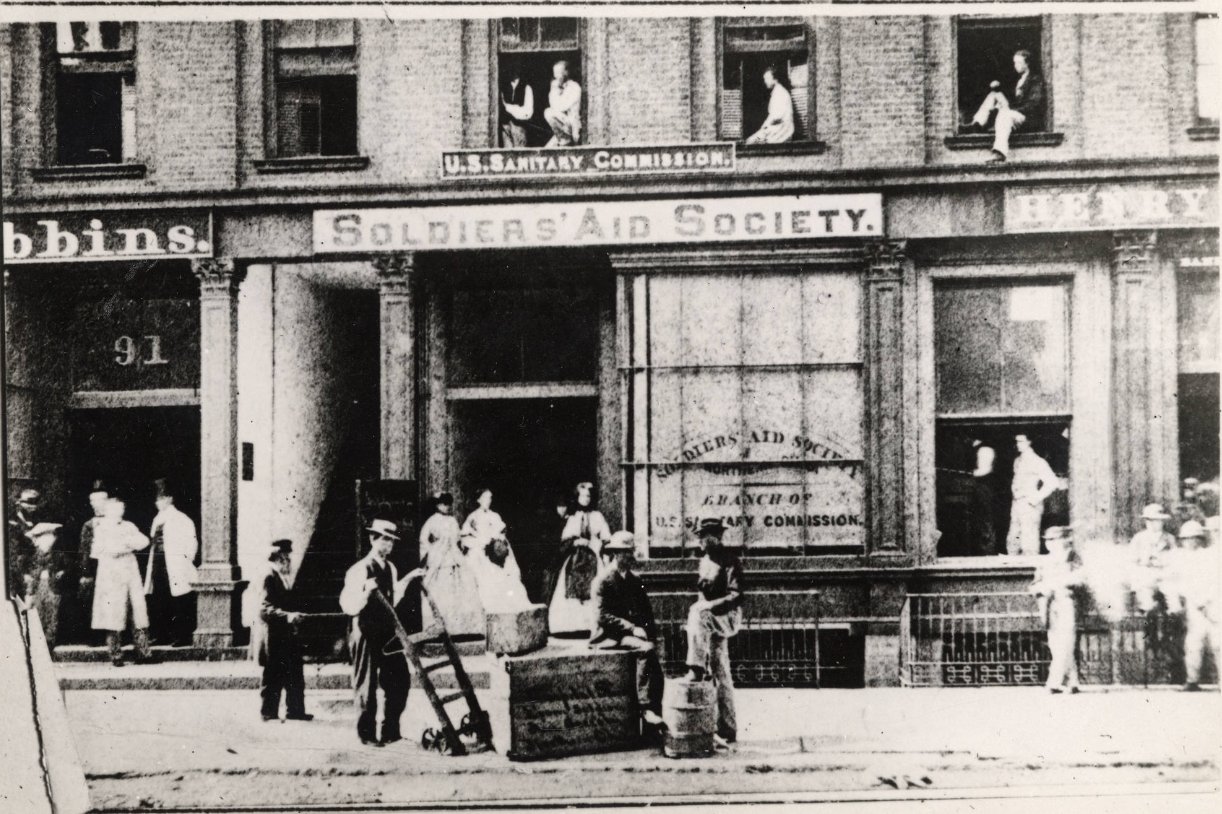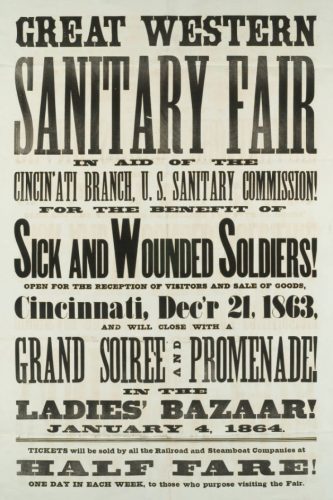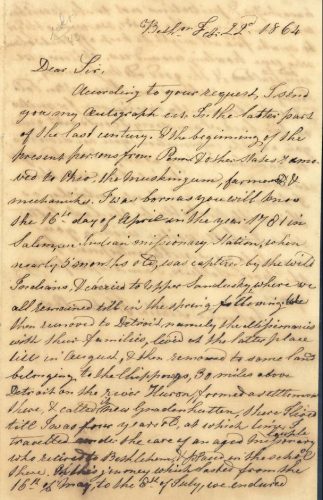For the Benefit of the Soldiers: The United States Sanitary Commission

The United States Sanitary Commission (USSC) was a civilian organization established in New York in April 1861, with the goal of aiding Union soldiers by training nurses and providing supplies and medical care for sick and injured troops. The War Department and President Abraham Lincoln approved the commission in June 1861. Its goal was to supplement, rather than replace, the services provided by the federal government.

The commission was organized into three departments: Preventive Service, which was tasked with inspecting and improving living conditions in Army hospitals and camps; General Relief, which raised funds to purchase food, clothing, medicine, and other supplies for sick and wounded soldiers; and Special Relief, which helped soldiers who were returning to civilian life after their military service.
Communities throughout the North established aid societies to raise funds and provide supplies for Union troops. The first permanently organized branch of the USSC in the nation was located in Cleveland. On April 20, 1861, just eight days after Confederate troops fired on Fort Sumter, a small group of women formed the Ladies Aid Society and organized a blanket collection for the soldiers being mustered at Cleveland’s Camp Taylor. A few months later, this group merged with other local charities to form the Soldiers’ Aid Society of Northern Ohio.
Other chapters soon formed throughout the state. Local chapters collected and distributed supplies ranging from quilts and blankets to medicine to live chickens. “Hospital gardens” provided fresh produce that helped prevent scurvy. The Cincinnati chapter created eight hospitals and converted 33 steamboats to hospital ships.

The USSC chapters were mainly funded by private donations. Sanitary Fairs proved to be a major fundraising tool; some attracted national attention and lasted for weeks. In December 1863, the Great Western Sanitary Fair opened at Mozart Hall in Cincinnati. When organizers requested items that could be sold at the fair to raise money, the flood of donations included historical relics, letters and autographs from Ohio pioneers, meteorites, antiques, and fine art. The fair raised more than $235,000. Over the course of the war, the USSC raised nearly $20 million in cash and supplies.
Women played a major role in local soldiers’ aid societies and the USSC. They organized fundraising events, coordinated donations, organized medical services, administered hospitals and soldiers’ homes, and nursed the wounded. Many of these women returned to their homes and families after the conflict, but some found jobs based on their wartime experience or became advocates for women’s rights.
The United States Sanitary Commission finished its general relief efforts in the fall of 1865, but continued to help soldiers and their families with pension claims until 1870. The process of collecting and organizing operational and financial records continued until the USSC was officially disbanded on January 7, 1879.
Thank you to Stephanie Michaels, Research and Catalog Services Librarian at theState Library of Ohio, for this week’s post!



Leave a Reply
You must be logged in to post a comment.